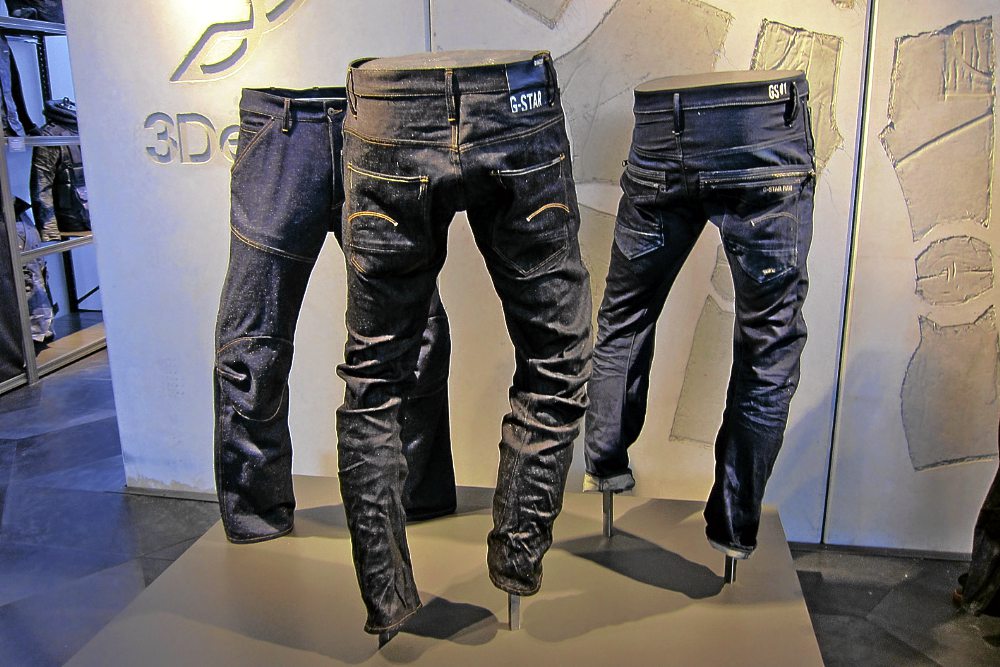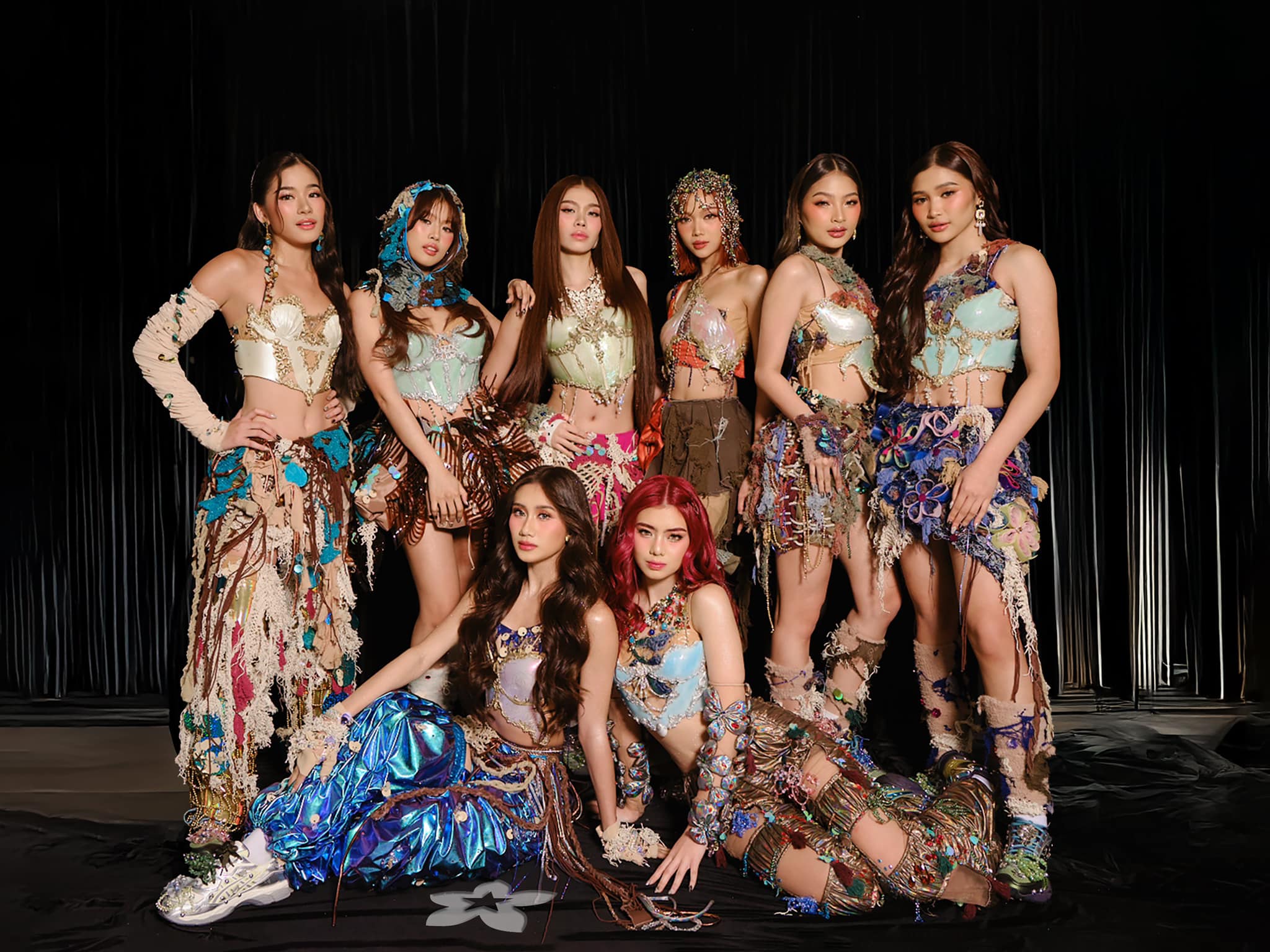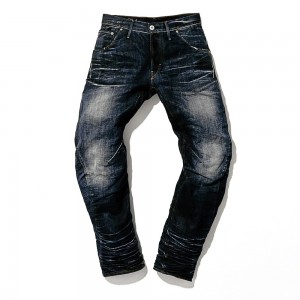 Never—ever—having to wash your jeans sure sounds like a ludicrous idea, in the same vein as the hair experts’ dictum to wash hair only twice—gasp!—or thrice a week at most.
Never—ever—having to wash your jeans sure sounds like a ludicrous idea, in the same vein as the hair experts’ dictum to wash hair only twice—gasp!—or thrice a week at most.
But if you ever find yourself cajoled into getting a pair of this Dutch cult denim brand, prepare to make room in your freezer because, yes, instead of washing, you will need to freeze those jeans between uses.
I thought I heard wrong when Clarissa Reyes, the store manager of the just-opened G-Star Raw boutique at Bonifacio High Street Central in Taguig (which holds its grand launch today), said, “You don’t wash your G-Star jeans.”
Instead, you put them in a Ziploc bag and stuff in the freezer for a few days. The subzero temperature in the fridge is supposed to kill any bacteria. Another alternative, she said, is to air the jeans, but not in direct sunlight.
“If it’s really necessary, have it dry-cleaned if you’re having it cleaned for the first time.”
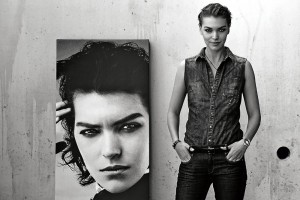
The reason given was that G-Star Raw jeans are dyed, cut and sewn a certain way, such that washing them would alter their appearance.
This cynic was getting a crash course on the brand before a media trip to the G-Star Raw headquarters in Amsterdam, and the Bread & Butter fashion trade fair in Berlin in early July.
It’s an idea, I thought, that would never fly among Filipinos. Washing can’t be optional.
But G-Star Raw, which owes its renown to a style of jeans designed exactly to mimic the comfort and look of a worn-in pair, demands just that kind of offbeat care. The fit just gets better with time, as it follows the molds and contours of your body, the way you sit, bend and wear it.
And that’s achieved without the intervention of water, detergent and heat from your dryer.
Founded in 1989 by a man named Jos Van Tilburg, G-Star Raw debuted two product lines in 1996 that would catapult it to its present status.
There was Raw Denim, which meant untreated and unadulterated denim, save for a heat process that made sure there was no shrinkage, such that you could buy your exact size; it was an instant hit with denim purists.
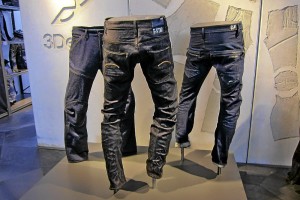
Then came what would be known as Elwood, architecturally conceptualized 3D jeans created by its chief designer, a Frenchman named Pierre Morisset, who got inspired by the pair worn by a biker at a rest stop, drenched to the bone, his jeans molded in the riding position even as he alighted from his motorcycle.
‘Straight, straight, straight’
A spirited man who heads a team of designers not in the Amsterdam headquarters but in St. Remy de Provence in the south of France (“because I suffered in Amsterdam weather”), Morisset said he was “sad to see pants that were straight, straight, straight,” leading him to create Elwood.
“You need several months of use without washing to get it to a certain shape,” he told us in Berlin. “I tried to buy a worn-in pair from someone off the street. I said I was from G-Star and asked if he would sell me the pants he was wearing. I said I would replace it, and he said no… I thought it was very important that we make pants with the comfort of a worn-in pair. That was the beginning of the 3D pants 16 years ago, and we’re still developing.”
For people weaned on, and inured by, images of straight, flat jeans, they may balk at the first sight of a G-Star Elwood pair. On a hanger, it looks oddly arced, the legs curved inward like bows. It has kneepads akin to motocross pants, a seam across the thighs, slit seams at the back of the knee, 3D back pockets. It’s clearly not your typical five-pocket denim.

In fact, when Morisset first presented his prototype, the G-Star team was skeptical. “We told Pierre, we can’t sell this,” said Remco de Nijs, the company’s PR manager. “But he was so convinced with the story. He made us try it… After three seasons, it was a huge success.”
“At the time, people were all selling copies of the Levi’s 501,” Morisset recalled. “It took me 45 minutes to design the Elwood and gave it to the patternmaker. I thought, this is the pants of the future and now I have to make it.”
It has since sold 13 million units, the second best-selling jean style after the Levi’s 501. Morisset has since earned the moniker “denim surgeon.”
The G-Star 3D style has evolved into many permutations, including styles for women. The brand now has several design categories, including the utilitarian military-inspired styles of Raw Cargo; the tailored and more streamlined Raw Correct; the casual Raw Sports; the top-of-the-line Raw Essentials; and the heritage collection called Raw Atelier.
The company likes to claim that it’s not a fashion brand but a product developer, such that Morisset’s title on his business card is “production development director.”
The Frenchman is all about comfort; in his enthusiasm during our interview, he unceremoniously dropped his pants to demonstrate that he was wearing a pair three sizes too big, cinched at the waist with a thick white belt. But he added that the choice of fabric and finishing were just as important in a design.
“Shape is a comfort detail,” he noted. “This is what makes G-Star different.”

Pressed to describe G-Star to an imaginary first-time potential customer, De Nijs proceeded to recite a long list of adjectives that included “functional,” “elegant,” “sexy,” “innovative,” “modern.” Morisset cut in and said simply: “The Hermès of jeans!”
For sure, G-Star does not aspire to compete at the level of heritage denim brands. “We’re a modernistic denim. We’re very clear who we’re for,” said Shubhankar Ray, the global brand director.
“We like vintage clothing and we take elements from vintage clothing, but our look is very modern… It’s a $2.2-billion company, so obviously somebody likes it.”
G-Star aspires to stride both the luxury level and the mainstream. It aims to maintain its street cred even with appearances, for instance, at New York Fashion Week.
“We don’t have target groups,” noted De Nijs. “We’re for denim lovers. It’s hard to target denim consumers in terms of age groups. What a kid of 16 thinks cool may also be cool for a guy of 45.”
Banquet
Its spokespersons are a varied mix, and have included the actresses Liv Tyler, Gemma Arterton and Clemence Poesy, film director Vincent Gallo, and teen chess grandmaster Magnus Carlsen. Actors Dennis Hopper and Benicio del Toro have also appeared on G-Star runways.
G-Star has also had a longstanding design collaboration with Australian industrial designer Marc Newson.
In the fall, the brand will debut campaigns featuring rising American model Arizona Muse and young American actor Caleb Landry Jones. The campaigns were shot by music photographer Anton Corbijn.
“It’s a banquet,” said Ray to explain the G-Star target market in relation to its choice of endorsers. “It doesn’t exclude anybody. It’s a mind style rather than a lifestyle.”
G-Star is available in 21 countries but doesn’t operate its own stores, save for two in Amsterdam. In the Philippines, it’s exclusively distributed by Primer Group of Companies, the same company that runs The Travel Club and ROX, among others, in partnership with Singapore’s Sidefame Fenix Group. The BHS Central store carries men’s and women’s collections, and accessories.
Ray said G-Star plans to open new categories for select markets with lower, entry-level price points. (A typical pair of G-Star jeans retails north of P10,000. Denim lovers have surely paid that much and more for a pair during the premium-jean trend era 10 years ago.)
It’s also beefing up its women’s segment, beginning with the opening of its first concept women’s boutique in Amsterdam in September, which was previewed at the Bread & Butter event in Berlin.
“We’re underdeveloped in women,” Ray said. “There’s a place for a strong, in control, tough, confident styling for modern women.”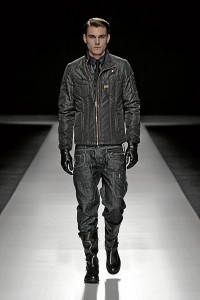
In Amsterdam, I was coaxed into trying a G-Star Arc pair: super low-rise, baggy, boyfriend jeans style—quite a departure from the skinny, and even occasional flare, styles that I prefer. Never mind the comfort—that’s a given and not top priority for someone who teeters in high heels most days—but I really liked what I saw that I bought the pair.
“If you find a new silhouette, everything in your closet isn’t interesting anymore,” De Nijs had said.
Granting I’ve worn them only once, on a sultry day in Berlin, it took a lot of resolve not to send my jeans to the cleaners when I arrived home. And it’s only because of that no-wash situation that my G-Stars have remained there, hanging a safe distance from the rest of my clothes.
I haven’t decided on my next move: Do I cross the threshold and wear them—unwashed—again, or do they first get their germ-killing time in the fridge, next to the chicken and ice cream?

